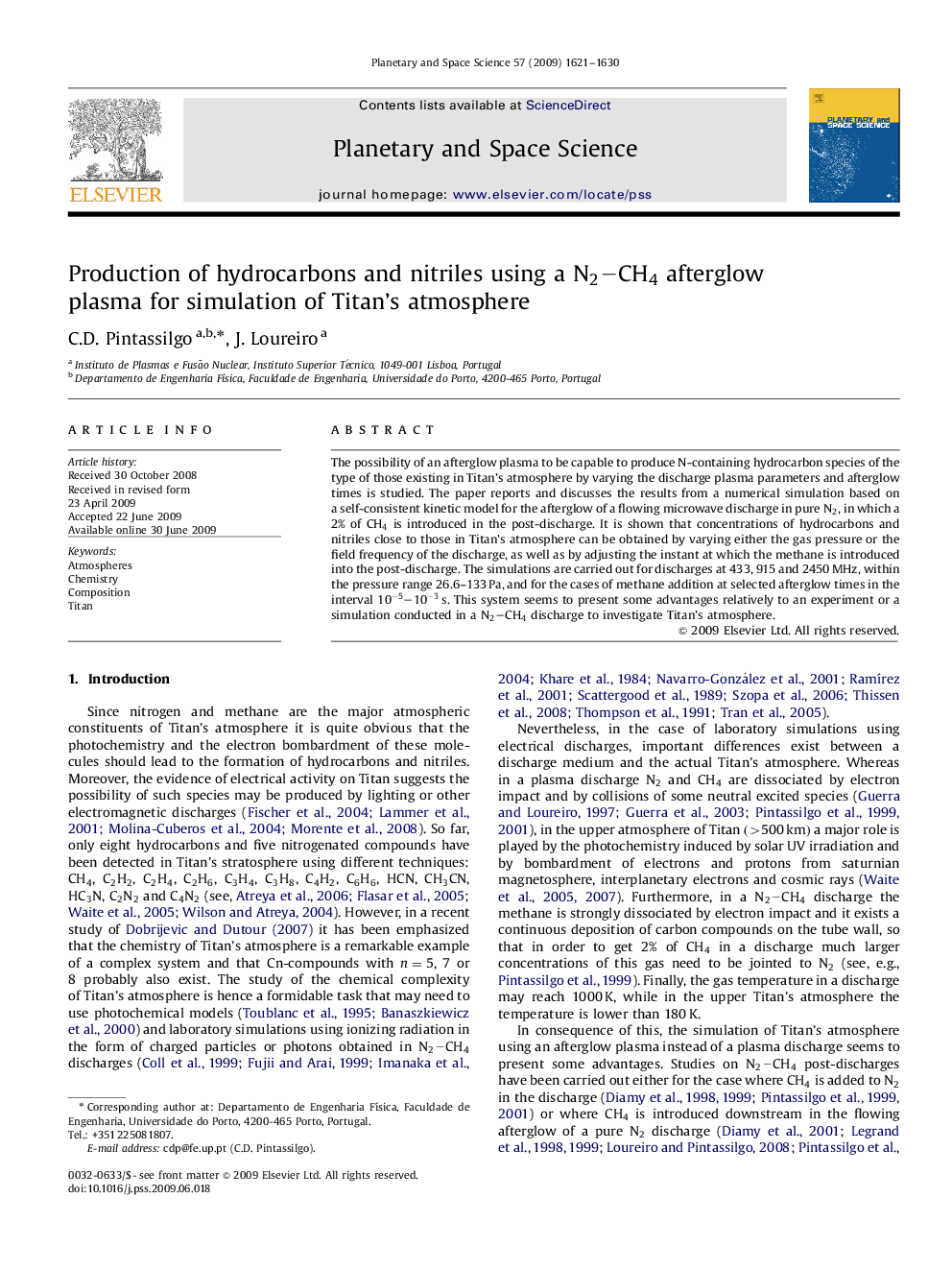| Article ID | Journal | Published Year | Pages | File Type |
|---|---|---|---|---|
| 1782020 | Planetary and Space Science | 2009 | 10 Pages |
The possibility of an afterglow plasma to be capable to produce N-containing hydrocarbon species of the type of those existing in Titan's atmosphere by varying the discharge plasma parameters and afterglow times is studied. The paper reports and discusses the results from a numerical simulation based on a self-consistent kinetic model for the afterglow of a flowing microwave discharge in pure N2N2, in which a 2% of CH4CH4 is introduced in the post-discharge. It is shown that concentrations of hydrocarbons and nitriles close to those in Titan's atmosphere can be obtained by varying either the gas pressure or the field frequency of the discharge, as well as by adjusting the instant at which the methane is introduced into the post-discharge. The simulations are carried out for discharges at 433, 915 and 2450 MHz, within the pressure range 26.6–133 Pa, and for the cases of methane addition at selected afterglow times in the interval 10-5–10-3s. This system seems to present some advantages relatively to an experiment or a simulation conducted in a N2–CH4N2–CH4 discharge to investigate Titan's atmosphere.
